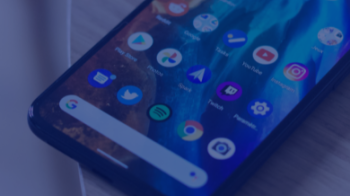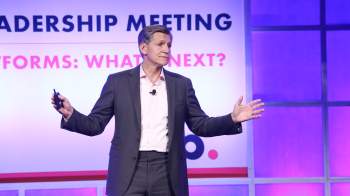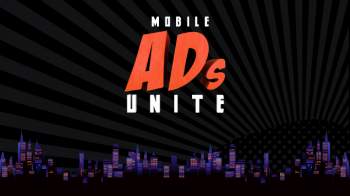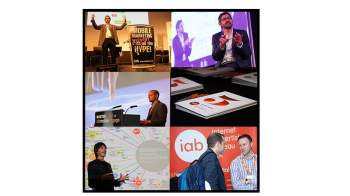What do consumers think about the difference between mobile app and browser advertising? Not a lot!
Steph Clarke
Steph Clarke, Senior Research Executive, reports on the latest global IAB project: Always On: A Global Perspective Of Mobile Consumer Experience.
The latest global IAB project Always On: A Global Perspective Of Mobile Consumer Experience, not only highlights the fact that smartphone use is almost constant, but also provides useful food for thought for mobile web and app strategising.
The study (based on 200 consumers per country from 18 IABs across the globe) found that within the UK, seven in ten people check their smartphone at least once every 30 mins, and more than a quarter check at least once every five mins. The UK ranks third for smartphone use, just behind Brazil and Argentina, and half of the population claim to spend over three hours each day on their device, with one in six enthusiasts spending more than six hours in an average day.
The rise of smartphone use and ‘always on’ media time is great news for mobile marketers trying to reach their audiences, but this makes a multi-screen strategy increasingly complicated, especially when you consider that there are essentially two different advertising platforms within mobile marketing: web and app. The question is, do we need to think of them as one or the same? What are the differences in usage between the two and what can the ad industry learn from how consumers interact with them.
Usage behaviour
For advertiser’s looking to target an audience in a particular context, understanding their preference towards web or app for different activities is incredibly useful. The study found that there is actually very little difference between frequency and time spent accessing mobile web and mobile apps, with 89% and 86% respectively claiming to visit daily or multiple times a day, and the majority of mobile users spend one to three hours within them. The number of different mobile websites and apps visited hardly varies either, as consumers switch their online experience between apps and websites for different pursuits.
This makes sense when we think about the fact that the majority of apps serve one or two explicit ‘functions’ each, and most websites tend to be quite specific in topic or subject, so consumers will switch between their ‘go-to’ sources (be it app or web) for individual daily activities. We can see this clearly from the results of this study, whereby web is preferred by the majority for information searches and reading articles or blogs, and apps heavily swing in preference for entertainment, gaming and socialising. As mobile banking and commerce have increased over the last few years, it’s interesting to see there is now a preference of app over web for these activities too. The UK is ahead of the curve on these, as the global preference is still the web.
This divide in preference for mobile web or apps for different activities is also evident between categories. Mobile web appears to be the clear preference for education and work, as well as for larger considerations or purchases, such as consumer electronics, cars, home and travel, all of which are naturally ‘browsing’ activities where a user wants to easily compare multiple sources. Apps are preferred for very specific, often real-time categories such as weather or location, as well as social networking and entertainment.
Web vs. app ads
Awareness of advertising on both mobile platforms is high, with little difference noted between the two. When asked about a particular day, 75% recalled seeing a mobile browser ad and 69% recalled an ad in app. Mobile ads also motivate consumers to action. Around two in five took an ‘action’ after seeing a mobile ad in web or app; the most common included brand recall (12% web/13% app), clicking on the ad (13%/9%) and searching for more information (10%/11%). This is great news for advertisers and breeds confidence that consumers are noticing and engaging with mobile advertising.
Although consumers noted very little difference in recall and actions taken between the two, the results suggest that neither are improving as much as the industry would like. Consumers recalled seeing more ads in browser and in-app than a year ago (58%/46% more). We know investment in mobile ads increased 50.8% between 2015 and 2016 from IAB UK’s Digital Adspend report, and this confirms that consumers are noticing this increase too. However, over a third feel that mobile ads have become more intrusive. Most haven’t noticed an improvement in creative quality, and higher percentage feel ads are less rather than more relevant to their interests than a year ago. Russia, Brazil and South Africa all showed the most progress in this space, so definitely worth taking note from how they are achieving this if the UK is to create a better ad experience for consumers.
So what does this all mean for advertisers?
Obviously, this intense consumer activity on smartphones is great for mobile marketers. While results from this study suggest mobile web and app are the same in a broad sense – i.e. people use them both a lot so separate web and app strategies might not be necessary – marketers may want to skew heavily based on category and activity to reach audiences in the right place at the right time. The UK is one of the top markets globally for users constantly checking and engaging with their smartphones, but other markets are exceeding in making the mobile ad experience better, and the UK needs to step up to improve upon this in order to truly resonate with consumers.
Related content
Google introduces Privacy Sandbox for Android
Learn moreWhat does P&G’s ‘Time for Action’ speech mean for UK advertisers?
Learn moreConsumer control and “common sense” key to tackling mobile ad blocking: IAB UK study
Learn moreIAB UK bids farewell to flagship Mobile Engage event
Learn more
Fast forward to 2030 with Futurescape
An in-depth exploration of the attitudes, innovations and media shifts that will shape the years ahead and redefine how we advertise by the turn of the decade



